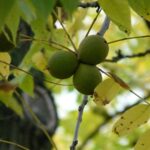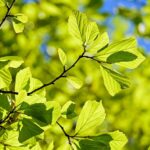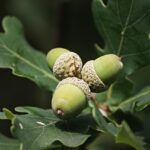Honey Locust Seeds: Uses, Growth, and Benefits

The honey locust tree (Gleditsia triacanthos) is an exemplary species that has earned the appreciation of gardeners, landscape architects, and environmentalists. Associated primarily with its irregularly thorned trunk and feathery leaflets, the honey locust seed pods, and the contents of the pods are of unique interest. The twisted and flat pods hang from its branches like a folk-art decoration. These pods hide seeds that are useful and surprising.
The Fascinating Honey Locust Seed Pod
If you’ve had the chance to stroll inside any good park through late summers or in the fall, you might have spotted long, twisted brown pods hanging from some of the trees. These honey locust seed pods are easily identifiable by their size, between 12 to 18 inches, and the number of seeds held within the sweet, sticky pulp. First, the seed pods are green and flesh-like, and after some days, they mature into dark brown.
Honey locust seed pods have a very interesting role to play in nature with their duality. The sweet pulp attracts animals that consume the pod and throw away the honey locust seeds after digestion. In contrast, the pod protects the seeds inside until the condition is right for germination.
Harvesting and Preparing Honey Locust Seeds
If you’re interested in growing your own honey locust trees, harvesting the seeds directly from honey locust seed pods is the first step. Here’s how:
- Collect mature, brown pods from the ground in fall or early winter
- Break open the pods to reveal the honey locust seeds
- Remove the seeds from the surrounding pulp
- Clean and dry the seeds thoroughly before storage
Honey locust seeds have an extremely hard seed coat that requires scarification (breaking through this tough exterior) before planting. This natural protection mechanism ensures seeds germinate only when conditions are ideal. You can scarify honey locust seeds by nicking them with a file, soaking them in hot water, or using a light acid treatment.
Growing Honey Locust Seedlings
Starting honey locust seedlings requires patience and care, but the results are worth the effort. After scarification, plant the seeds in well-draining soil about half an inch deep. Keep the soil consistently moist but not waterlogged.
Honey locust seedlings typically emerge within 2-4 weeks under optimal conditions. These young plants grow relatively quickly compared to other hardwood species, making them a satisfying choice for those eager to see results. During their first year, honey locust seedlings develop a strong taproot system that helps them become drought-tolerant as they mature.
Transplant your honey locust seedlings to their permanent location once they reach 12-18 inches in height. Choose a spot with full sun and enough space for these trees to reach their mature size of 30-70 feet tall with a similar spread.
Unexpected Uses for Honey Locust Seeds
Beyond simply growing new trees, honey locust seeds have several interesting uses:
- Food source: Historically, Native Americans and early settlers ground honey locust seeds to create a nutritious flour substitute. The seeds contain protein and can be roasted similar to coffee beans.
- Craft materials: The hard, shiny honey locust seeds make excellent natural beads for jewelry and decorative crafts.
- Natural dyes: The tannins in honey locust seed pods produce a warm brown dye used in traditional textile work.
- Educational tools: Teachers often use honey locust seed pods and seeds in science lessons about plant life cycles and seed dispersal mechanisms.
Environmental Benefits of Honey Locust Trees
Growing trees from honey locust seeds contributes significantly to environmental health. Mature honey locust trees offer numerous ecological advantages:
- Nitrogen fixation: Like many legumes, honey locusts can enrich surrounding soil
- Carbon sequestration: These fast-growing trees efficiently capture carbon dioxide
- Wildlife habitat: Birds and small mammals utilize honey locust trees for shelter
- Erosion control: Their extensive root systems help stabilize soil on slopes and riverbanks
Additionally, honey locust trees demonstrate remarkable adaptability to urban conditions, including pollution tolerance and resistance to road salt, making them valuable additions to city landscapes.
Challenges When Working with Honey Locust Seeds
Honey locust seeds have drawbacks. For one, the seeds have dormancy mechanisms and without treatment are hard to germinate. Besides, the wild seedlings come with the species’ thorns, sometimes up to 8 inches long, though thornless cultivars are available.
Finally, in some areas, honey locust trees are considered invasive. Local extension offices can be contacted to check if honey locust seeds are appropriate for your area.
Conclusion: The Remarkable Potential of Honey Locust Seeds
Honey locusts are a fabulous tree-filled resource, from the oddly twisted honey locust seed pod through to the finest lumber yielded by mature trees. Planting honey locust seedlings for your landscaping, harvesting seeds for crafts, or simply appreciating their input in the environment – there are millions of reasons to love these trees! So next time you’re watching those curiously curly pods dangling from a limb, spare a minute to remember each seed inside carries infinite potential-the perfect package of nature’s promise!



